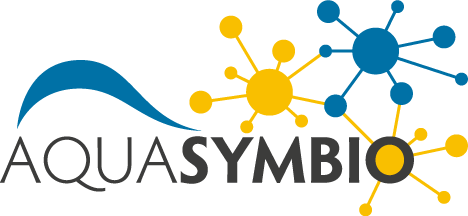Labrus bergylta
Diagnosis
Diagnosis_Genus: Labrus Linnaeus. Caput: Dentes acuti. Membr. branch. radiis VI. Opercula squamosa. Corpus: Pinnae dorsalis radii postice ramento filiformi aucti.
Diagnosis_Species: Labrus bergylta Ascanius. Also called "La Carpe de Mer". This Labrus is the largest and most common of its kind. It is abundant in the gulfs and in the neighborhood of Lindersmes, during the summer; it feeds almost on the surface of water of shells and sea-worms attached to the rock, and which coat it with one or two fathoms of water. There are two varieties, a red and a green. The first one is the most common. Small ones are exactly similar to large ones. They range from 10 to 15 inches; the big ones weigh 2 to 3 pounds. The flesh is firm and good; but it smells a little of the volatile alkali; quality common to sea worms and animals with shells. Labrus bergylta Pinnae dorsalis, radiis XX spinosis & X inermibus ramosis. B. 5. D. 20/10 /12. P. 14. V. 5/I. A. 9/3. C. 18. Norv. Bergylte, Dan. Söe-Carpe.
Other description (Marlin): Labrus bergylta is a heavy bodied wrasse with a broad head, small mouth and thick lips. The colouration of this wrasse is variable but there are no external differences between the sexes. The body, head and fins are often brownish red or reddish with numerous small white spots but can be greenish with white spots or irregular large vertical dark stripes. Young Labrus bergylta are often bright emerald green. Labrus bergylta can grow up to 50 cm long but is rarely over 30 cm in length.
Body_adult_max_length: 65.9 cm (Ottesen et al., 2012)
Body_adult_length: 35-40 cm (DORIS)
Body_adult_1year_length: 80 mm (Dipper et al., 1977)
Body_adult_8year_length: 360 mm (Dipper et al., 1977)
Body_egg_length: 1.05 ± 0.04 mm (spherical, with the gelatinous layer) (Ottensen et al., 2012)
Body_larvae_newly_hatched_length: 3.64 ± 0.05 mm (Ottensen et al., 2012)
Body_larvae_13DPH_length: 4.78 ± 0.19 mm (Ottensen et al., 2012)
Body_larvae_29DPH_length: 5.40 ± 0.66 mm (Ottensen et al., 2012)
Body_larvae_37DPH_length: 7.90 ± 0.41 mm (Ottensen et al., 2012)
Body_larvae_49DPH_length: 10.52 ± 0.82 mm (Ottensen et al., 2012)
Body_larvae_yolk_sac_larva_length: 4.28 ± 0.11 mm (Ottensen et al., 2012)
Body_larvae_preflexion_larva_length: 5.35 ± 0.30 mm (Ottensen et al., 2012)
Body_larvae_flexion_larva_length: 5.90 ± 0.78 mm (Ottensen et al., 2012)
Body_larvae_postflexion_larva_length: 10.52 ± 0.82 mm (Ottensen et al., 2012)
Stage_duration_yolk_sac_larva: 0-9 DPH (Ottensen et al., 2012)
Stage_duration_preflexion_larva: 10-25 DPH (Ottensen et al., 2012)
Stage_duration_flexion_larva: 26-33 DPH (Ottensen et al., 2012)
Stage_duration_postflexion_larva: 34-49 DPH (Ottensen et al., 2012)
Weight_max: 4.35 kg (Ottesen et al., 2012)
Weight: 1-2 kg (Wikipedia)
Sequence_rhosopsin: AY141318 (Li et al., 2009)
Sequence_MLL: AY362222 (Li et al., 2009)
Sequence_IRBP: DQ168075 (Li et al., 2009)
Sequence_RNF213: EU638211 (Li et al., 2009)
Etymology
Etymology: Labrus: Name from Latin 'labrum' for lip, rim or edge; referring to the big lips of the fishes of the genus (from Ovid and Pliny according to Petrus Artedi) (Fishbase).
Type species
The type species of the genus Labrus is Labrus mixtus (Linnaeus, 1758).
Type illustration / Type locality / Type specimen
Type illustration: Tab .I (Ascanius, 1767)
Ecology
Labrus bergylta lives in Eastern Atlantic: Norway to Morocco, including Madeira, the Azores and the Canary Islands (Fishbase).
The study of Dipper et al. 1977 indicates migration from the steady feeding intensity and changes in composition of the diet from March to June.
Substrate: water
Salinity: marine
sociability: solitary
Salinity: brackish
Habitat: estuarine
Habitat: coastal
Depth_juvenile: pelagic
Depth_larvae: pelagic
Depth_adult: demersal
Depth: 0-30 m (DORIS)
Migratory: oceanodromous_migration
Causality_of_migration: trophic_migration
Temporality_of_migration: seasonal (from March to June, Dipper et al., 1977)
Life cycle
Labrus bergylta is the largest of the north European wrasses, and may reach 29 years of age (Ottensen et al., 2012, Dipper et al., 1977).
The sexual maturity is reach between 6 to 9 years old (DORIS).
Protogynous sex change, thought to be driven predominantly by social cues, is reported to occur from 5 to 6 years of age with an age and size at 50% sex-change of 10.8 years,
636 g, and 342 mm in northern Europe (Grant et al., 2016).
No sexual dimorphism.
Longevity: more than 3 years
Generation_time: more than 3 years
Reproduction_mode: sexual_hermaphrodite_protogynous (oviparous)
Fertility_period: seasonal (during spring, May to July)
Spawning_method: external fertilization in the water column
Feeding behaviour
Mode of locomotion
Original description
Reference(s)
Attached phylogeny
Observation site(s)
SYMBIONTS
| Association with... | Region origin | Name of site | In reference... |
|---|---|---|---|
| Amyloodinium ocellatum | Aquarium Zoological Society of London |
(1934) On Oodinium ocellatum Brown, a parasitic dinoflagellate causing epidemic disease in marine fish. Proc. Zool. Soc. Lond. 2:583-607. |












